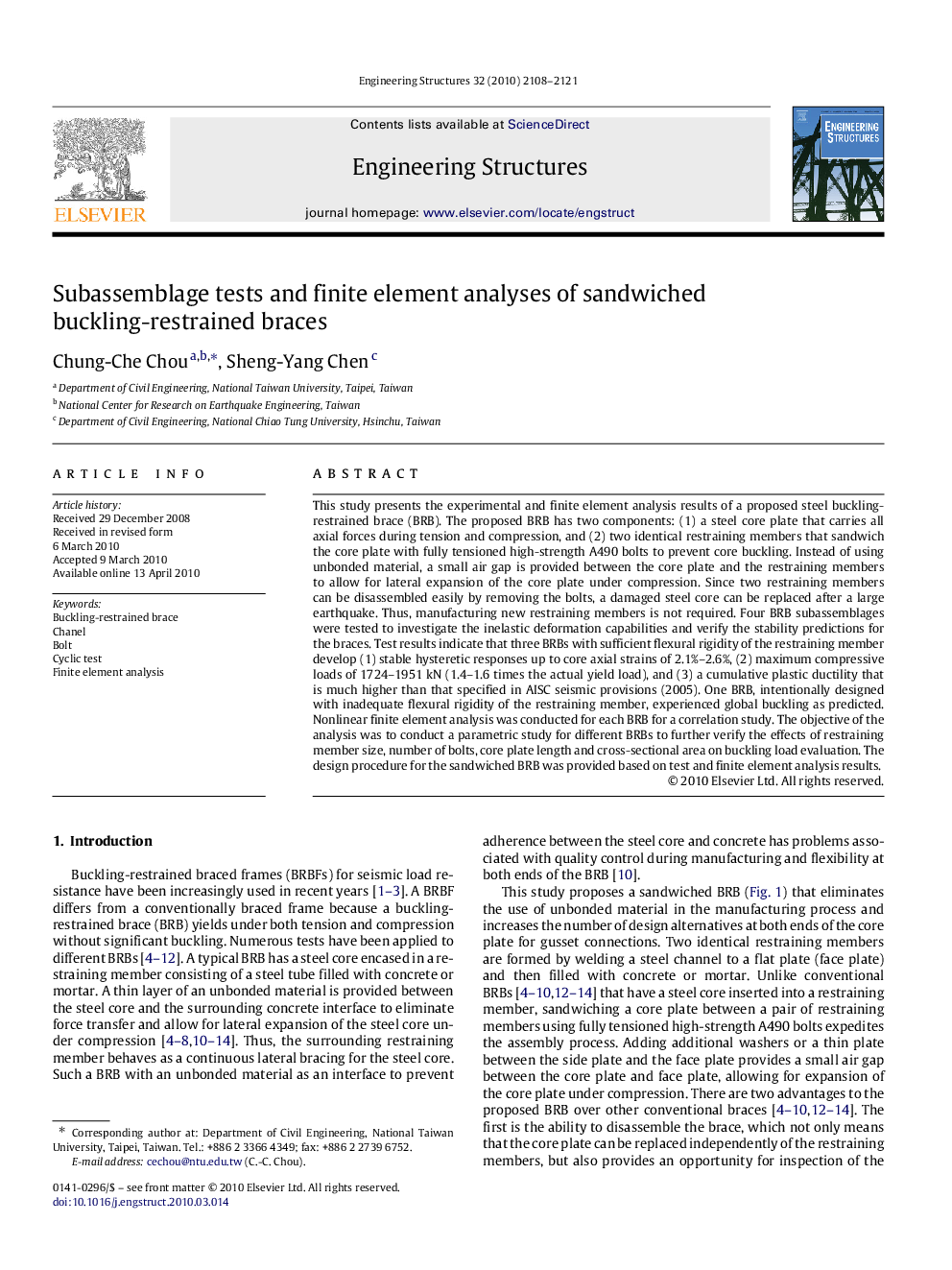| Article ID | Journal | Published Year | Pages | File Type |
|---|---|---|---|---|
| 268213 | Engineering Structures | 2010 | 14 Pages |
This study presents the experimental and finite element analysis results of a proposed steel buckling-restrained brace (BRB). The proposed BRB has two components: (1) a steel core plate that carries all axial forces during tension and compression, and (2) two identical restraining members that sandwich the core plate with fully tensioned high-strength A490 bolts to prevent core buckling. Instead of using unbonded material, a small air gap is provided between the core plate and the restraining members to allow for lateral expansion of the core plate under compression. Since two restraining members can be disassembled easily by removing the bolts, a damaged steel core can be replaced after a large earthquake. Thus, manufacturing new restraining members is not required. Four BRB subassemblages were tested to investigate the inelastic deformation capabilities and verify the stability predictions for the braces. Test results indicate that three BRBs with sufficient flexural rigidity of the restraining member develop (1) stable hysteretic responses up to core axial strains of 2.1%–2.6%, (2) maximum compressive loads of 1724–1951 kN (1.4–1.6 times the actual yield load), and (3) a cumulative plastic ductility that is much higher than that specified in AISC seismic provisions (2005). One BRB, intentionally designed with inadequate flexural rigidity of the restraining member, experienced global buckling as predicted. Nonlinear finite element analysis was conducted for each BRB for a correlation study. The objective of the analysis was to conduct a parametric study for different BRBs to further verify the effects of restraining member size, number of bolts, core plate length and cross-sectional area on buckling load evaluation. The design procedure for the sandwiched BRB was provided based on test and finite element analysis results.
